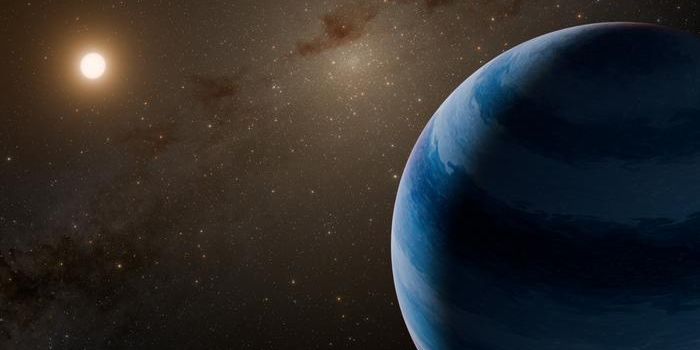New Study Suggests One-third of Binary Stars Have Engulfed Their Planets
While our solar system is relatively calm and inert, some sun-like stars out there will literally eat the planets in their orbit. In a new study in Nature Astronomy, researchers propose that upwards of 1/3 of all sun-like stars in the universe behave in this strange way
This was discovered by astronomers focusing on binary systems. Binary systems are composed of two stars orbiting around a common center of mass. Since these two stars in the system are formed from the same material, they should be the same in terms of their chemical composition. However, this isn’t always the case, and sometimes, there are variations in the chemical compositions of two binary stars. There are two mainstream theories as to why this occurs. First, that it could be due to inconsistent measurements due to inhomogeneities in the gaseous makeup of the star, or second because the stars have engulfed entire planets.
The Nature study investigates this second theory. Researchers say that they have found “compelling evidence” in favor of the star-swallowing scenario, and by their calculations, have predicted that 20-35% of all stars have engulfed planets.
Stars can’t engulf planets and then “digest” them like animals, and planets leave specific chemical signatures on the star’s surface. Solid planets like Earth, Mars, or Mercury contain heavy elements like iron, silicon, and titanium. Stars don’t typically contain these elements and are normally composed of gaseous elements such as helium, hydrogen, and oxygen. When a star engulfs a planet, those heavy elements are incorporated into the star’s outer layers, which appear on the star’s absorption spectrum.
If astronomers see high frequencies of elements like iron or silicon in a star’s composition, that alerts them to the possibility that a planet-engulfing scenario may have occurred. This is even more telling if the star is not as rich in its usual elements like carbon or oxygen, which is another clue.
Out of the 107 binary star systems investigated, 33 of the star pairs showed increased amounts of iron in one star compared to its other half. Notably, large amounts of lithium were also found in the iron-rich stars— another element commonly found in rocky planets. It should be noted that sun-like stars do begin their lives with high volumes of lithium, but it’s also been proven that lithium burns off within the first 100 million years of a star’s existence. That means that seeing significant levels of lithium in older stars is most likely due to planetary engulfment.
Looking back at our solar system, it’s unlikely that our sun has ever engulfed another planet, which may be one of the reasons intelligent life has been able to prosper on Earth. These insights into planetary engulfment also mean that we gain the potential to use chemical variations between star systems to determine which solar systems could host habitable planets, and which stars have already consumed theirs.
Sources: Nature, Science Magazine








